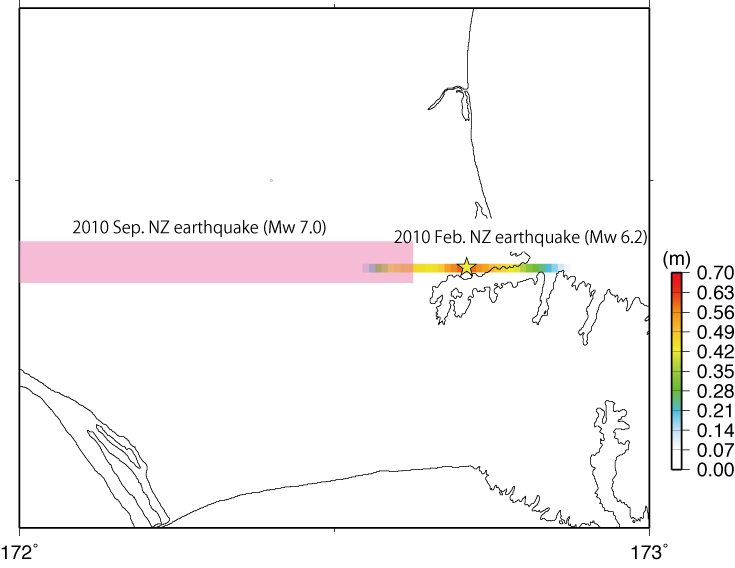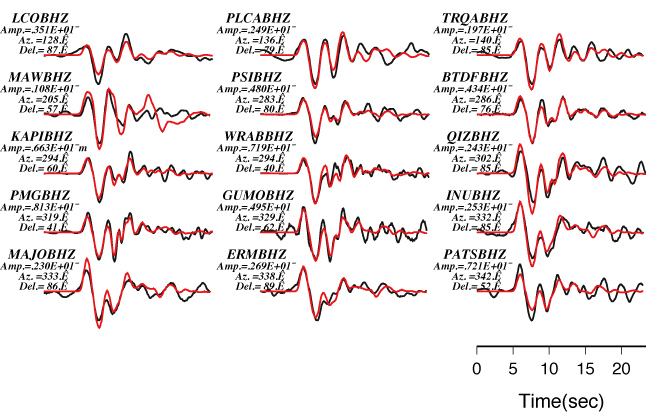Feb. 21, 2011 New Zealand Earthquake
Destructive earthquake has struck Christchurch, New Zealand, on Feb. 21, 2010 (UTC). Hypocenter of this earthquake was located in west side of seismic source area of the Sep. 3, 2010, Mw7.1 earthquake (by USGS). Focal mechanism of the 2011 earthquake was right-lateral strike slip with NW-SE directed P-axis, which is same as that of the 2010 earthquake. Moment tensor solutions by USGS and gCMT included relatively large non-double-couple component, which indicates complex faulting process in the 2011 earthquake. We estimated rupture process of the 2011 earthquake by using "Complex seismic source inversion method with the data covariance matrix" (Kasahara and Yagi, 2011). We assumed direction of fault zone to be E-W, which is same as the 2010 earthquake. We used teleseismic body waves (P-waves) data recorded at FDSN and GSN provided by IRIS-DMC.
From obtained focal mechanism distribution, we found that fault geometry of the 2011 earthquake to be as follows: approximately vertical around hypocenter; dip south in west of the hypocenter; dip north in east of the hypocenter. Rupture in shallow part and the complex rupture process might have increased high frequency components of strong ground motion, and hence damages.
Results
Seismic Moment Mo = 2.8 x 10^18 Nm (Mw 6.2);
Rupture Duration: T = 6 s;
Source Plane: (strike, dip) = (270, 87)
Obtained Fault Parameters: (strike, dip, rake) = (274, 87, 178)
Hypocenter: (Lat = 43.6S, Lon = 172.71E, depth= 9 km).
[We used the epicenter by USGS]
(Amato Kasahara and Yuji Yagi, University of Tsukuba)
Slip distribution. A star in the map indicates the epicenter.

Focal mechanism, source time function and slip distribution.

Focal mechanisms for each knot.

Focal spheres are plotted in the lower hemisphere projection.
Comparison of observed (black) and synthetic waveforms (red).
